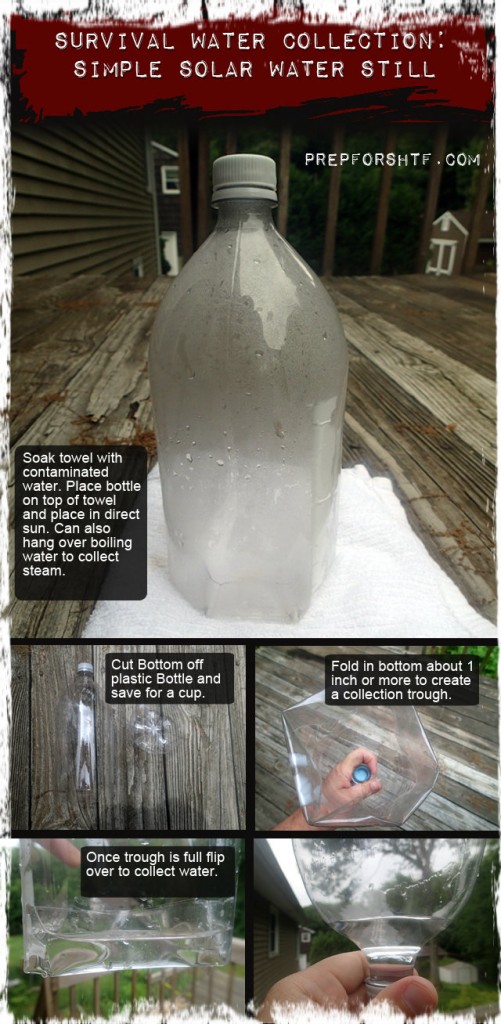
Some Points to Ponder
Virtually all survival manuals have various methods of water collection, to include solar water distillers. The concept of this type of distiller is simple in its design. It uses the sun’s rays for evaporation of water/moisture so it condenses and can be collected on a cooler surface typically clear plastic. The water or moisture in most cases is supplied by soil and/or green vegetation.
Once constructed an in ground solar distiller is a passive collection method, but the construction of one is not. It requires effort and in some cases, the effort needed may exceed the reward. If you have a water supply on hand then you may consume it all constructing an in ground solar distiller.
Remember there are no guarantees and the water collected may never exceed the water expended. In some cases, it may be better to reduce your activity and seek shade to prevent fluid loss. In other words, you may have to consume a gallon of water constructing the distiller, and you may only over time collect half or even less of what you consumed to build it. Risk versus reward must always be considered.
Other methods of distilling contaminated water include cutting the bottom off a clear plastic water or soda bottle (keep the piece you cut off for a drinking cup). Once the bottom is cut off, fold the bottom inch or more of plastic on the bottle upwards, inside the bottle to form a collection trough.
The bottle is then placed on a cloth saturated with contaminated water. It can be water from a mud puddle, saltwater, urine or any water source you have that cannot be treated by any other method. It is important that the bottle and cloth be placed in sunlight.
The water from the cloth evaporates and then collects on the inside of the bottle and then makes its way into the trough. To collect the water turn the bottle over, and allow the water to drain to the cap, make sure you have the bottom half you cut off ready to collect the water once you remove the cap.
This requires nearly no effort at all and the materials can easily be carried with you. Materials needed include a knife/shears to cut the bottle, an absorbent cloth and of course a clear container. Do not use any container that had contained chemicals of any sort or unknown liquids. Use water bottles, plastic milk jugs or soda bottles. Certain containers may not be clear plastic, but they will work, it just may take longer for the water to evaporate and collect.
The solar distillation method using a water or soda bottle would be ideal if you are stranded at sea.
You can extract drinking water from wet clay or any saturated soil by placing a bottle as described over the clay/soil in direct sunlight. You can also place the bottle over boiling water to catch the steam for the desalination of salt water. Keep in mind this method will not produce large volumes of water. The size of the distiller is directly related to the amount of water collected.
It is not likely that any distiller constructed in a survival situation would supply you with the required amount of water daily. In warm climates, you would need in excess of a gallon a day in most cases. Passive systems should be constructed however because you literally cannot have too much water in a survival situation. Once constructed you can ration your sweat or seek other sources of water as the distiller works.
Use all methods available but remember the risk versus rewards. You do not want to sweat profusely in the hot sun building an in ground distiller only to have to wait 24 hours for a cup of water. Survival in any situation is about making the right choices based on real time information at hand.